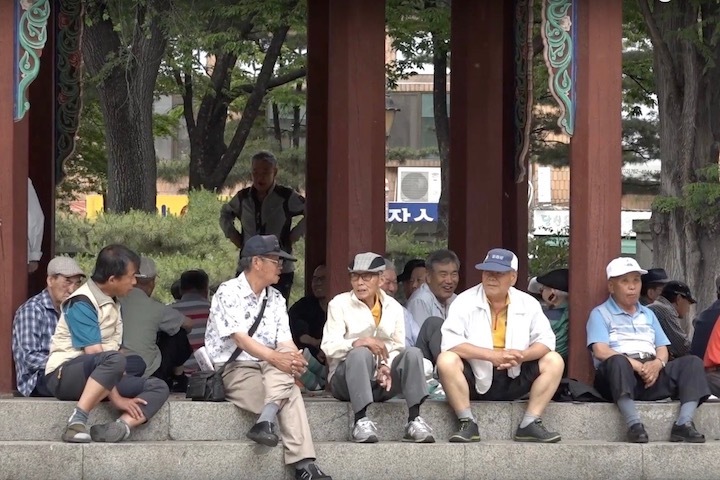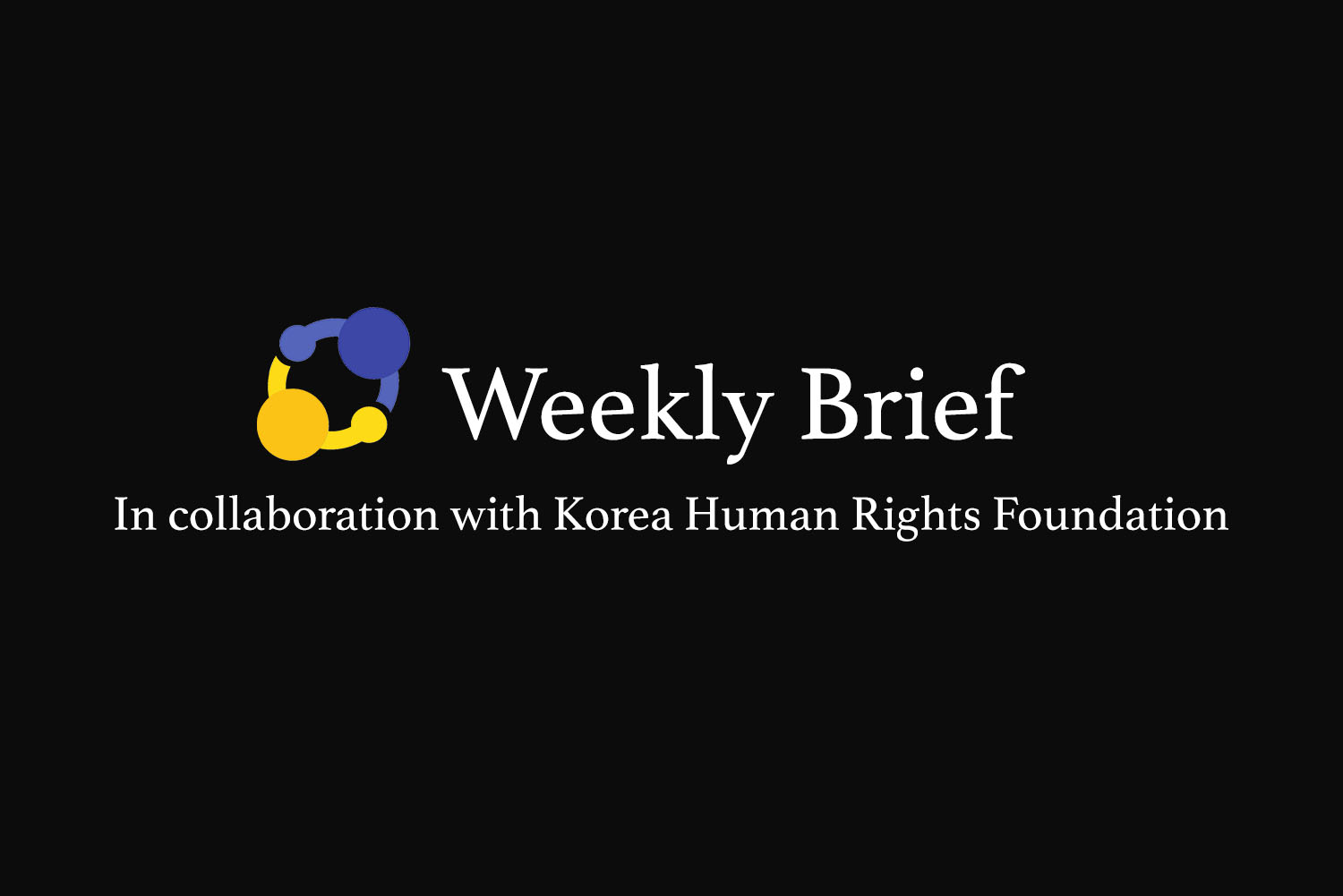
Reporter's Notebook: Summer in Tapgol Park
As my colleague Jieun and I stepped into Tapgol Park in downtown Seoul, all eyes immediately turned to us: two young women in a space where elderly people come to spend their free time. Many approached with a smile, looking intrigued by our presence, but wary of the bulky camera equipment we carried.
One passerby implored, “Please don’t shoot, it’s an ugly sight.”
“All these media outlets come and go here, thinking they can get a gripping shot out of these people’s deplorable living conditions. But don’t you think it’s rude, to take a peek through the eyes of a journalist, to reveal something that [the subjects] are so ashamed of?”
While on our way to Tapgol, Jieun and I had been excited, and somewhat naïve. We had expected a hearty welcome from the old folks.
We approached the stone steps underneath the old pavilion where seniors were gathered around, chatting and fanning themselves under the scorching sun. We asked if we could film them, and they responded with an awkward silence, before explaining that they had done interviews like this before, with people coming here asking for their opinions — but nothing ever changed.
Several men told us that they were afraid their children might see them on the internet, that they were embarrassed of possibly being seen sitting around in a park doing nothing.
Shame was the emotion dominating the atmosphere. Many elderly people found it shameful to have no place in the economy anymore, and to be left feeling as if they had nothing to contribute to the country. “Well, what am I going to make out of my life? I’m just counting my last days,” said Kim Jung-kyu, a ninety-year old man dressed in a neatly pressed hanbok, a traditional Korean garb.
We were then approached by an elderly man in a straw hat and a Hawaiian shirt, who said, “This is just the bright side of elderly life in this country. Go to the other side of the park, and see it yourself, get that on camera — the life of the homeless, the miserable, the wretched. That’s what you should cover.”
It then struck me that all the men I had seen in Tapgol Park (there were hardly any women) had all been nicely dressed, and had talked about how their family members made regular visits to their homes. Less fortunate elderly people had to keep working for a living, and weren’t able to spend this afternoon relaxing in the sun.
A sharp contrast lay just beyond the boundary of Tapgol Park. As we followed the stone wall outside and around a corner, the scenery changed. We saw old men in ragged clothes with unwashed hair, lying barefoot on the streets. Empty soju bottles rolled around. A homeless man with a swollen hand sat on the ground, dazed, a vinyl trash bag tugged tight to his chest. I approached him with the faint hope of striking up a conversation, only to have him shrug me off and refuse.
On the streets leading off Jongno, the main thoroughfare, some men sat in groups playing baduk and janggi (Korean chess) while others trudged along, trying to stave off poverty by collecting scrap cardboard for a few cents.
Statistics paint a harrowing picture: Almost half of all seniors in South Korea live in poverty, while the country’s elderly suicide rate is the highest among all industrialized nations.
While it was in some ways nice to spend a summer afternoon chilling with old folks, the sad reality remained that the majority of the ageing poor go unnoticed, on the margins and beyond the reach of the camera. That’s a reality we did not manage to capture in a way we thought would do the suffering justice — so it has been omitted from the final video.
Cover image: “Summer in Tapgol Park.” (Jieun Choi & Seohoi Park/Korea Exposé)

